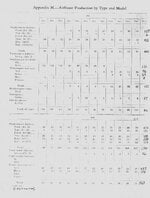HiPretty good guess, but looks like not quite. According to William Green Fighters Volume two, "An improved model, the Ki-27 - KAI, was proposed in 1940, and three aircraft were actually built, but by that time preparations were in hand for the production of the Ki-43 Hayabusa, and the last Ki.27 fighters were delivered in July of that year. A total of 3,386 Ki.27 fighters was (sic) built, including prototypes."
But it looks like I was partly wrong too as the Sea Gladiator production ended in 1940 as well. According to William Green, Fighters volume three:
"The last Gladiator II was delivered to the R.A.F. in April 1940, bringing total production, apart from export machines, to 311 aircraft. Of 311 aircraft. Of these, thirty-eight were modified as interim Sea Gladiators for the Fleet Air Arm, and a further sixty were built from the outset as Sea Gladiators."
So that does make the Gladiator and Sea Gladiator peers of the Ki 27, which looks to me like a better fighter. However, the picture is a bit more nuanced of course since the British were also making plenty of Hurricanes and Spitfires by then, whereas the Ki 27 was built in such large numbers because they didn't have another major fighter type until the Hayabusa which wasn't really ready for full scale production until March of 1941.
We know the Ki-27 was fairly evenly matched with the Hurricane in Malaya etc., but I don't think Ki-27 can hold up to a Spitfire. Ki-43 on the other hand, I would take that bet.
For Gloster production a table in 'Gloster Aircraft since 1917' by Derek N James, supplies details:
Also deliveries to RAF/FAA and exports including ex-RAF aircraft:
Mike

